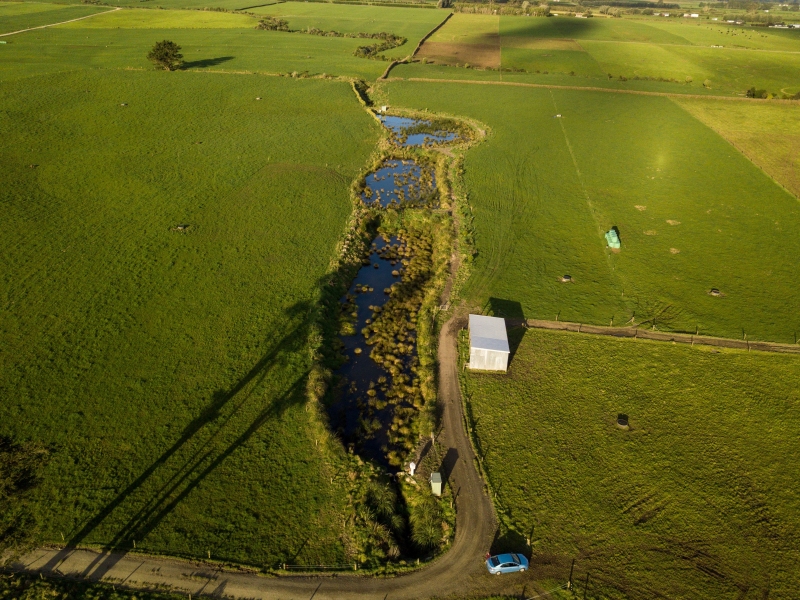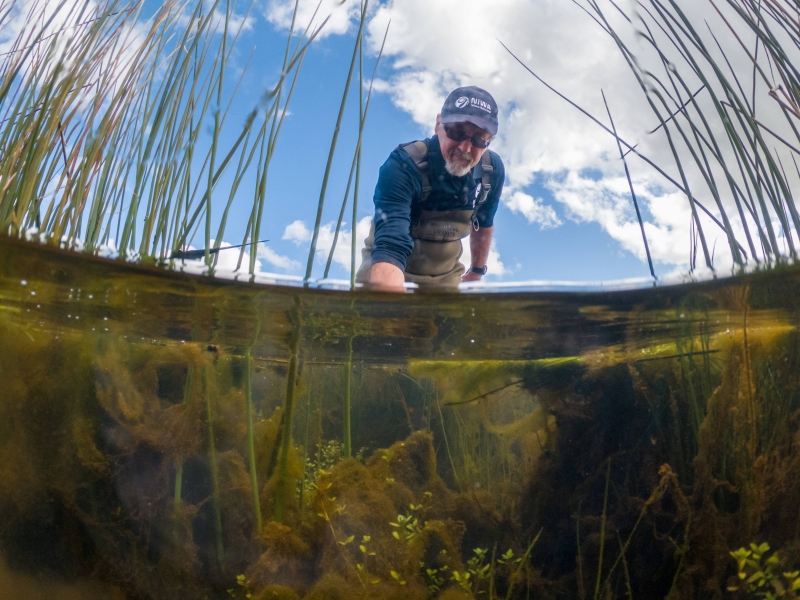A four-year NIWA study has found that constructed wetlands can reliably remove more than half of the nitrate leaching from dairy farm pastures.
Excess levels of pollutants, such as nitrate-nitrogen, can leach into groundwaters and seep into freshwaters where they can cause toxic algal blooms, reduce oxygen, and kill aquatic life.
NIWA Principal Scientist - Aquatic Pollution Dr Chris Tanner says constructed wetlands are increasingly being used as a natural solution to reduce agricultural pollution.
“Wetlands mitigate run-off and drainage by creating a filter between agricultural areas and fresh water sources. They soak up excess contaminants and prevent them from entering streams, rivers, and lakes. This can significantly enhance the ecology of rural catchments,” said Dr Tanner.
Owl Farm, a 160-hectare dairy farm at St Peter’s School near Cambridge, was the case study in question.
In 2016, a 0.34ha constructed wetland was built as part of a wider plan to reduce contaminant loads that flow into the nearby Waikato River.
NIWA evaluated the wetland’s capacity for nitrogen removal in groundwater. They took flow and contaminant concentration measurements over four years, which were then used to calibrate a mathematical model.
“The wetland model simulated the movement of water and contaminants through three wetland areas, estimating the flow and contaminant load entering and leaving the wetland. The model indicates that the constructed wetland was very effective, removing between 55–80% of the inflowing nitrate nitrogen load annually, with an average of 61%,” said Dr Tanner.
Removal was greatest when flows are low, and during summer, when warm temperatures stimulate plant uptake and the conversion of nitrate to inert nitrogen gas by microbes.
Although performance reduced as water flow rates increase, even during higher-flow periods, nitrate removal was still maintained at 20–40%.
The wetlands also provide habitat for aquatic life, moderate flooding, improve the aesthetics of the landscape, and provide a range of cultural benefits, such as materials for weaving.
“This study is helping us determine if constructed wetlands could be implemented more widely as an effective long-term solution to water pollution. These results are promising, and similar studies are in progress across the country to gather more data and build the evidence base,” said Dr Tanner.



